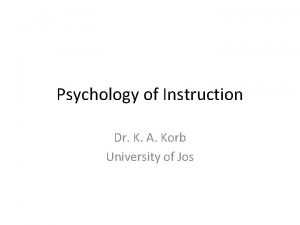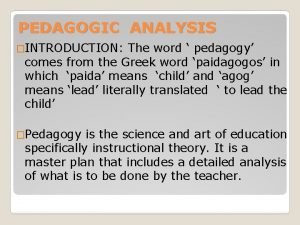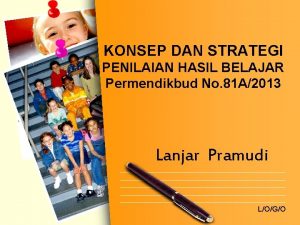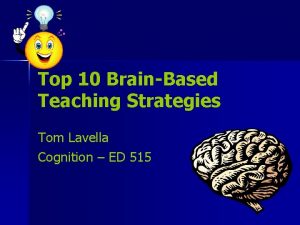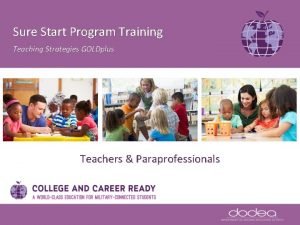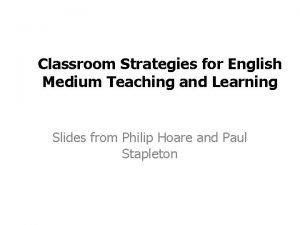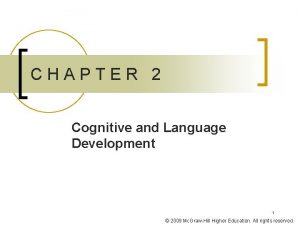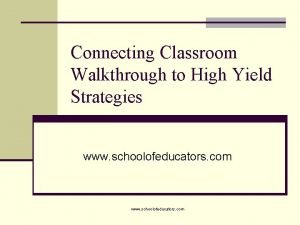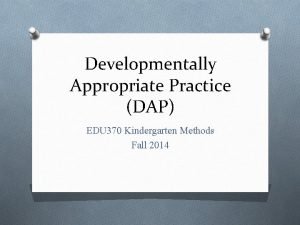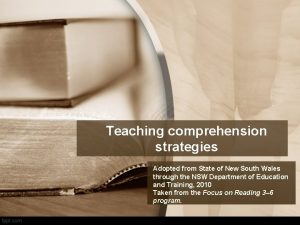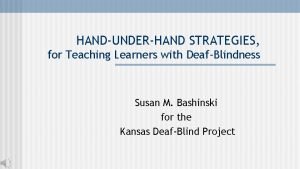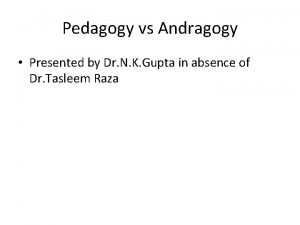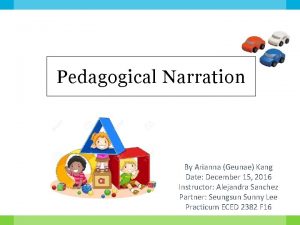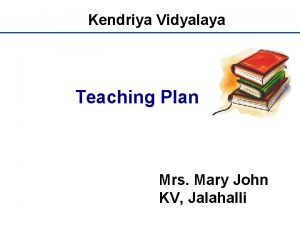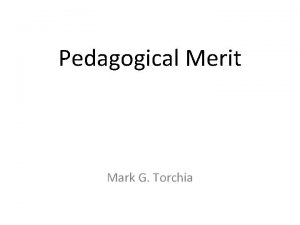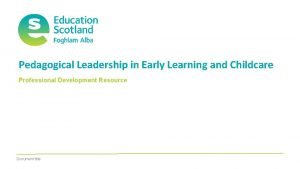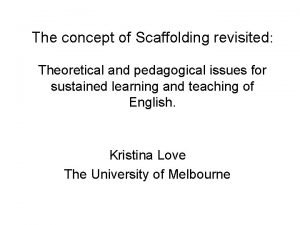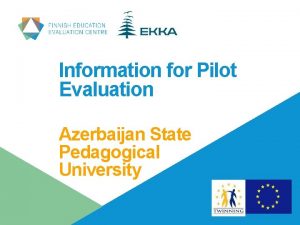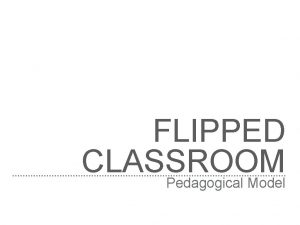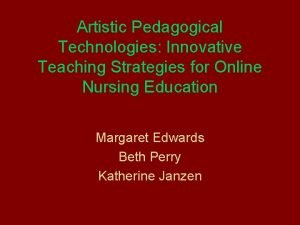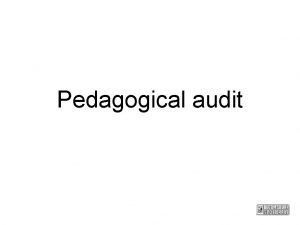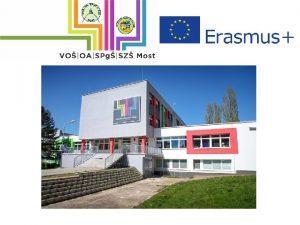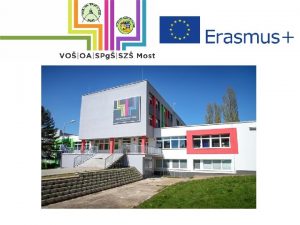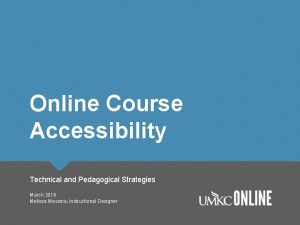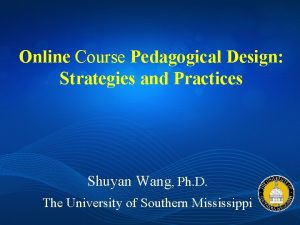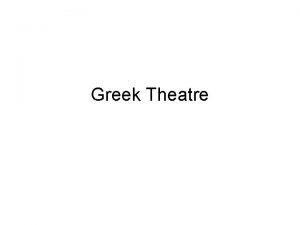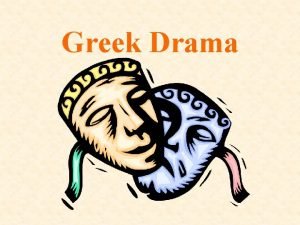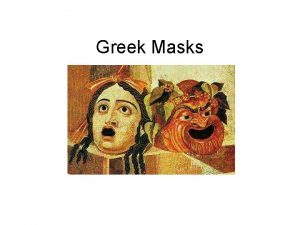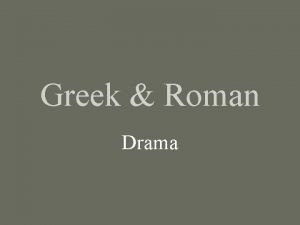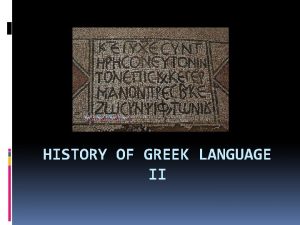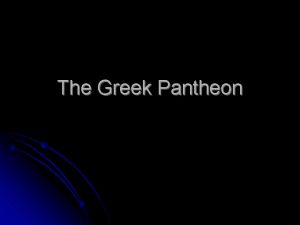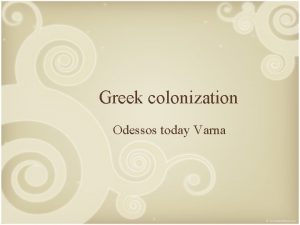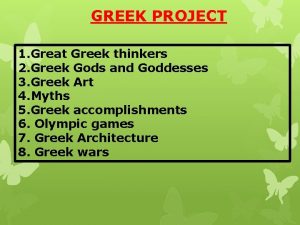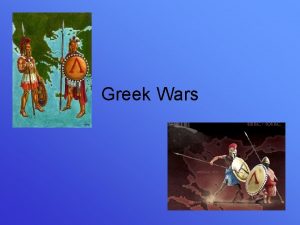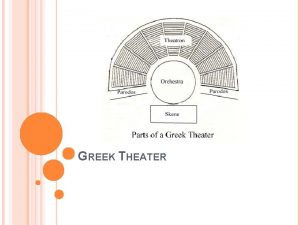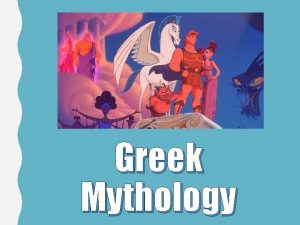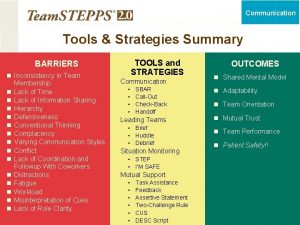Teaching Modern Greek Online Pedagogical Tools and Strategies
























- Slides: 24

Teaching Modern Greek Online: Pedagogical Tools and Strategies Eva Prionas, Ph. D Stanford University American Association of Teachers of Modern Greek www. aatmg. org April 22, 2020

AGENDA • Remote/online learning • Importance of pedagogy in online teaching • Examples of implementing pedagogical tools • Future plans and practices



Remote Teaching Online Teaching • Embrace the shift Balance your teaching well (synchronous asynchronous) - Adopt and adapt lessons that engage Logging in does not = learning Center the learner - Create with your students –collaborate with colleagues • Prioritize building community Nurture your new space - Create etiquette and discuss with those involved Promote the message: Our new space is a “ a good neighborhood” and we all care about it • Focus on fundamental pedagogy goals and practices If the bar becomes lower it means I don’t respect you as a student Low level accountability diminishes school’s work – Higher goals Higher = motivation Bring out the best in each other • Build on student interests and assets Bring in authentic material (artists- museums- current events )

Greek Schools of the San Francisco Bay Area, at Stanford University


Greek Schools of the San Francisco Bay Area In collaboration with the American Association of Teachers of Modern Greek (AATMG) Work together to Identify common challenges and potential Work collectively towards a new vision for Greek programs & schools Support Greek communities to maintain and promote language culture – heritage (within and beyond our communities)

San Francisco Bay Area Schools In collaboration with the AATMG Academic Year 2019 -2020 • Completed Description of Target Student Abilities • Completed Documents to Map the Curriculum • Created a Common Core Curriculum

Main Instructional Goal COMMUNICATE in the Greek Language While advancing to the next level


Developing Student Proficiency Not only the what (vocabulary) and the how (grammar) of the language But also the why and the when to say what to whom when using Greek (p. 45 of WL Handbook)

Proficiency Scales • The Common European Framework of Reference (CEFR) was put together by the Council of Europe between 1989 and 1996 • Πιστοποιητικό Ελληνομάθειας Η μετάφραση στα ελληνικά του Κοινού Ευρωπαϊκού Πλαισίου Αναφοράς διατίθεται από το Κέντρο Ελληνικής Γλώσσας • Inter-Agency Language Roundtable (ILR) www. govtilr. org • The American Council on the Teaching of Foreign Languages (ACTFL) scale provides a great deal of definition, especially at the lower levels of proficiency usually achieved in foreign language learning. It is widely used in the US www. actfl. org. CEFR A 1 A 2 B 1 B 2 C 1 C 2 ILR 0/0+ 1 1+ 2/2+ 3/3+ 4/4+ ACTFL NL NM NH IL IM IH AL AM AH S D



Steps in Planning Consider instructional goals and student proficiency level in order to design a lesson or a lesson sequence that reflects these goals. The following is a set of planning questions to help you ground technology and pedagogy integration goals

Questions to ask • What are the abilities of my students individually, as a class - Proficiency level Determine the level - Design for independence - Use tech that fits student and family • How do I address Heritage Learning Expanding vocabulary - Correcting grammar structures Express ideas • How do I Differentiate Instruction address issues of multiple proficiency levels - How do I create appropriate tasks • How do I use authentic materials What is the appropriate technology to use Criteria of selecting material and technology How do I teach Culture Products ( tangible ) - Practices ( traditions customs ) - Perspectives (values & beliefs underlying practices & products) - Appropriate Technology to use

Sample Lessons

Planning Process Standards Approach Program Syllabus Units Lessons



Design • Consider and use what you have • Map your units and lessons • Think of your students and where they need to be • The new format requires students to be autonomous • Choose technology that fits your needs Don’t use tech tools just because they are cute or fancy • Collaborate

Reflection - Future Directions • What technologies are the ones that support your planned activities or participation structures during the lesson? • How are the technologies you’ve chosen support students in achieving the planned learning objectives • What activities or participation structures do you want students to engage in that will support your class goals? • How do we keep up with enrollments - parent communication - quality teaching

` Eυχαριστώ eprionas@Stanford. edu Stanford University American Association of Teachers of Modern Greek www. aatmg. org (online teaching and resources)
 Pedagogical approaches to teaching math
Pedagogical approaches to teaching math Advantages and disadvantages of pedagogical analysis
Advantages and disadvantages of pedagogical analysis Pedagogy comes from
Pedagogy comes from Definition of micro teaching
Definition of micro teaching Assesment strategies
Assesment strategies Top 10 brain-based teaching strategies
Top 10 brain-based teaching strategies Teaching strategies gold training
Teaching strategies gold training Emi teaching strategies
Emi teaching strategies Piaget teaching methods
Piaget teaching methods Remedial teacher meaning
Remedial teacher meaning High yield strategies
High yield strategies 10 effective dap teaching strategies
10 effective dap teaching strategies Super six comprehension strategies nsw det
Super six comprehension strategies nsw det Deaf-blindness teaching strategies
Deaf-blindness teaching strategies Pedagogy vs andragogy
Pedagogy vs andragogy Pedagogical translation
Pedagogical translation Pedagogical design for e learning
Pedagogical design for e learning Pedagogical narration template
Pedagogical narration template Kostanay state pedagogical institute
Kostanay state pedagogical institute Lesson plan kvs bangalore region
Lesson plan kvs bangalore region How to pronounce pedagogical
How to pronounce pedagogical Pedagogical leadership skills
Pedagogical leadership skills Nukus state pedagogical institute
Nukus state pedagogical institute Pedagogical scaffolding
Pedagogical scaffolding Azerbaijan state pedagogical university
Azerbaijan state pedagogical university

